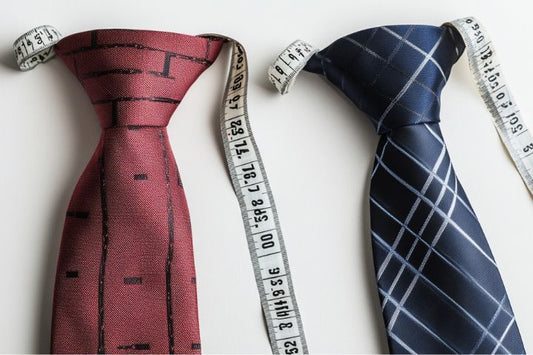Compression socks are specialised hosiery designed to improve circulation and reduce swelling in the legs and feet. These socks have many benefits but may leave indentations on your legs.
Typically made from a combination of spandex or rubber and nylon, these socks apply graduated pressure to the lower legs. The tightest compression is at the ankles, which then decreases up the leg.
This design helps to facilitate blood flow back towards the heart, combating the effects of gravity on blood circulation when a person is standing or sitting for extended periods.
Individuals with various health conditions, such as varicose veins, deep vein thrombosis (DVT), or lymphoedema, may benefit from wearing compression socks.
They're also frequently used by athletes to enhance performance and reduce muscle soreness after exercise.
In addition, many people in occupations that involve long periods of time on their feet or in stationary positions may use compression socks to alleviate discomfort and fatigue.
The effectiveness of compression socks is supported by research indicating that they can prevent the occurrence of blood clots in the lower legs, especially during long flights or in post-surgical settings.
By promoting circulation and reducing the risk of swelling, these garments are a non-invasive solution to a variety of circulatory issues.
It is crucial for compression socks to be properly fitted to ensure maximum benefit and comfort. Typically, a healthcare provider can recommend the appropriate level of compression based on an individual's specific needs.
Understanding Compression Socks
Compression socks are designed to support venous and lymphatic circulation in the legs. They can be used for medical conditions, during sports, or for comfort during extended periods of inactivity.
Definition and Purpose
Compression socks are specialised hosiery intended to prevent and manage various medical conditions. They apply graduated pressure to the leg to improve blood flow, reduce swelling, and minimise the risk of blood clots.
Types of Compression Socks
There are three primary types of compression socks, which differ in terms of the level of pressure they apply:
Mild Compression: Generally ranging from 8 to 15 mmHg, these are often used for relief from aching and mild swelling.Moderate Compression: Ranging from 15 to 20 mmHg, moderate compression socks are beneficial for travel, mild varicosities, and swelling.
Firm Compression: With a range of 20 to 30 mmHg, firm compression socks are utilised for moderate to severe varicosities, edema, and post-sclerotherapy, among other conditions.
Mechanism of Action
Compression socks exert controlled pressure on the legs. The most compression is at the ankle and gradually decreases up the leg. This pressure fosters blood flow back to the heart, reduces venous pressure, prevents venous stasis, and relieves heavy and aching legs.
Benefits of Compression Socks
Compression socks are designed to offer various health advantages, from increasing circulation to reducing the risk of certain medical conditions.
Improving Circulation
Compression socks are engineered to apply gradual pressure to the legs, which can promote better blood circulation. This is particularly beneficial for individuals who spend long periods sitting or standing.
Reducing Swelling and Discomfort
They help minimise swelling in the feet and ankles by aiding the movement of fluids back up the legs. People who experience discomfort due to edema might find these socks helpful.
Aiding in Recovery Post Exercise
After strenuous activities, compression socks can be useful in accelerating recovery times. They reduce muscle soreness by facilitating the removal of lactic acid from the muscles.
Prevention of Deep Vein Thrombosis
By improving circulation, compression socks might lower the risk of deep vein thrombosis (DVT), a condition where blood clots form in the deep veins of the leg. This is particularly relevant for travellers on long-haul flights or individuals with limited mobility.

Application and Usage
Compression socks are specially designed hosiery intended to help improve circulation, reduce swelling and prevent the formation of blood clots. Below, find specific information on how and when to use compression socks, their benefits for air travel, and recommended duration of wear.
How to Wear Compression Socks
To properly wear compression socks, one should smooth out any wrinkles and ensure the heel is properly aligned with the foot.
They should sit evenly on the leg without rolling or bunching, as this can hinder their effectiveness or cause discomfort.
When to Use Compression Socks
Individuals should use compression socks during periods of prolonged sitting or standing, which can contribute to circulatory problems.
Healthcare professionals often recommend them for patients who have been diagnosed with deep vein thrombosis or varicose veins.
Compression Socks for Flying
Potential users: Flyers at risk of deep vein thrombosis (DVT)Reason for use: To minimise the risk of DVT and leg swelling
Flight duration: Especially beneficial on flights longer than 4 hours
Duration of Wear
Compression socks should be worn throughout the day and removed before bedtime.
The duration may vary based on medical advice or the user's comfort and needs. Individuals should consult a healthcare provider for a tailored wear schedule.

Potential Risks and Considerations
While compression socks are largely beneficial, there are specific risks and contraindications that users should be aware of to avoid potential harm.
Contraindications for Use
Certain individuals should not use compression socks because they could exacerbate existing health conditions. These contraindications include:
Severe peripheral arterial disease: This condition can be worsened due to reduced blood flow.
Congestive heart failure: Compression may increase blood pressure in the heart.
Recent skin grafts: These socks could damage delicate new skin.
Possible Side Effects
The use of compression socks is generally safe, yet some people might experience side effects, such as:
Skin irritation or rash: Particularly if the socks are too tight or worn for too long. To avoid this it's important to regularly wash the socks and not to buy super tight compression socks.Tingling or numbness: Indicating poor fit or excessive compression.
Consulting a Healthcare Professional
It’s pivotal for users to consult with a healthcare professional:
Before use: Especially if they have existing health conditions.For proper sizing and compression level: Ill-fitting socks can be ineffective or harmful.





